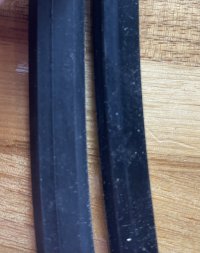Question about the dry hop dump set up and operation. I developed a very similar hop dump rig as shown in the last 3-4 pages (all 1-1/2 inch hardware). I did some "dry run" tests with hops prior to an actual brew, and found that I could not get the hops to drop. I tapped, pounded, worked the valve, etc., and they just sat in the site glass. I have been thinking about going to a 2" site glass with a reducer attaching to the 1-1/2" lid fitting, but before going to that expense (given the uncertainty of whether that would even work), I thought I would ask you who are successfully dropping with 1-1/2" rigs what your experience and secret of success has been in doing so. Thx.
[I have NOT read ALL 77 pages of posts, so apologies if this has been covered previously.]

























































![Craft A Brew - Safale S-04 Dry Yeast - Fermentis - English Ale Dry Yeast - For English and American Ales and Hard Apple Ciders - Ingredients for Home Brewing - Beer Making Supplies - [1 Pack]](https://m.media-amazon.com/images/I/41fVGNh6JfL._SL500_.jpg)


